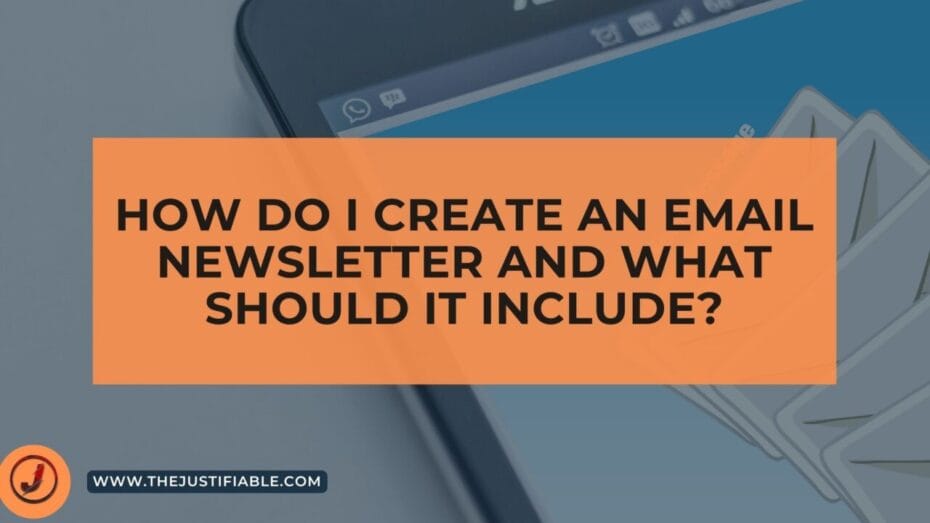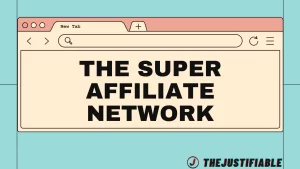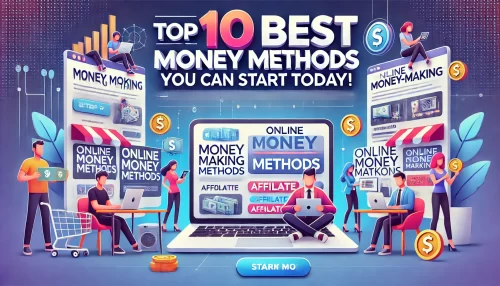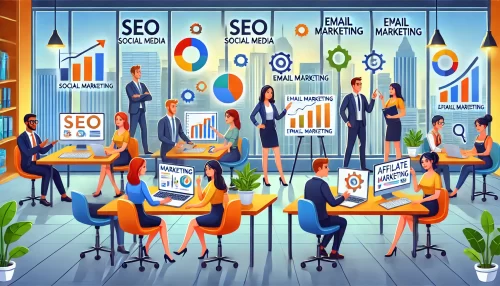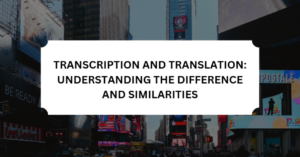Table of Contents
Are you looking to create an email newsletter but aren’t sure where to start? Wondering what key elements to include to ensure it engages your audience?
In this guide, we’ll break down step-by-step how to build an effective email newsletter and share tips on what content makes it stand out.
Building the Foundation of Your Email Newsletter
Creating a solid foundation for your email newsletter is essential. I recommend starting with a clear purpose and goal. This helps guide the content and structure of the newsletter, ensuring that it resonates with your readers and provides value. When you define these key elements early, your newsletter will stay focused and impactful.
I advise taking the time to also consider your audience. Understanding who will receive your newsletter will help you tailor the content to their specific needs and interests. From there, you can choose the right platform and design elements that make the email experience user-friendly and visually engaging.
Email Marketing Recommendations
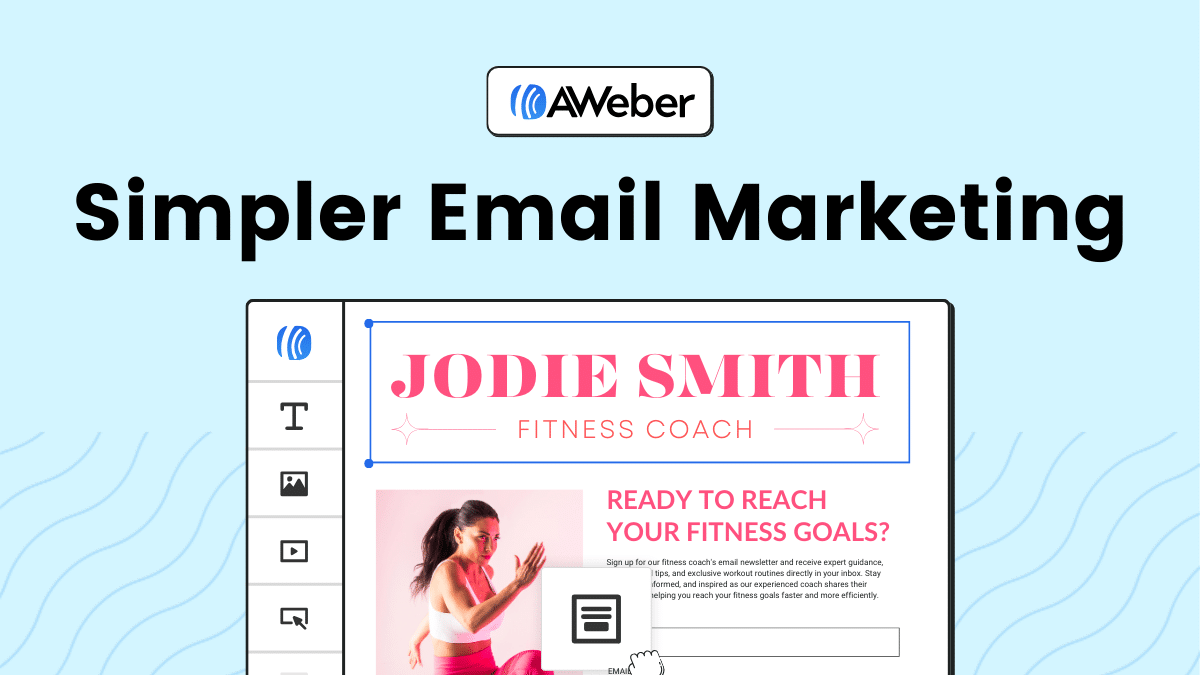 Aweber
| 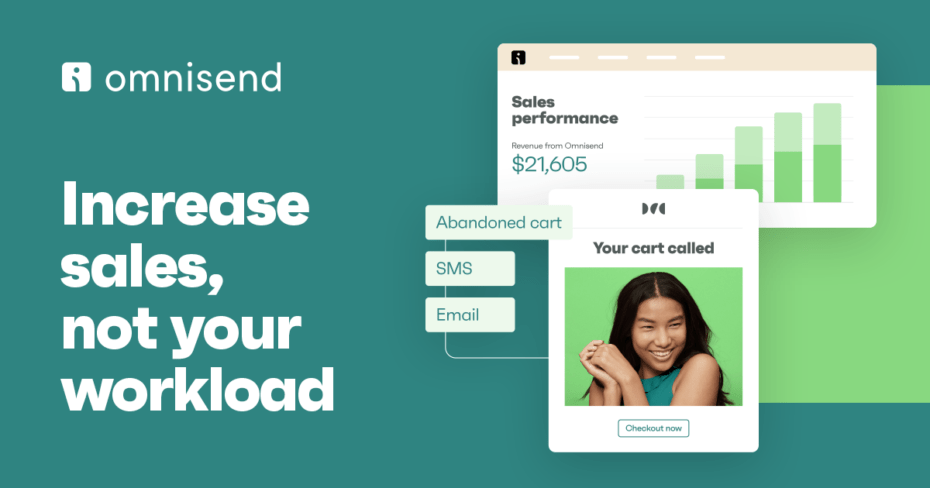 Omnisend
| 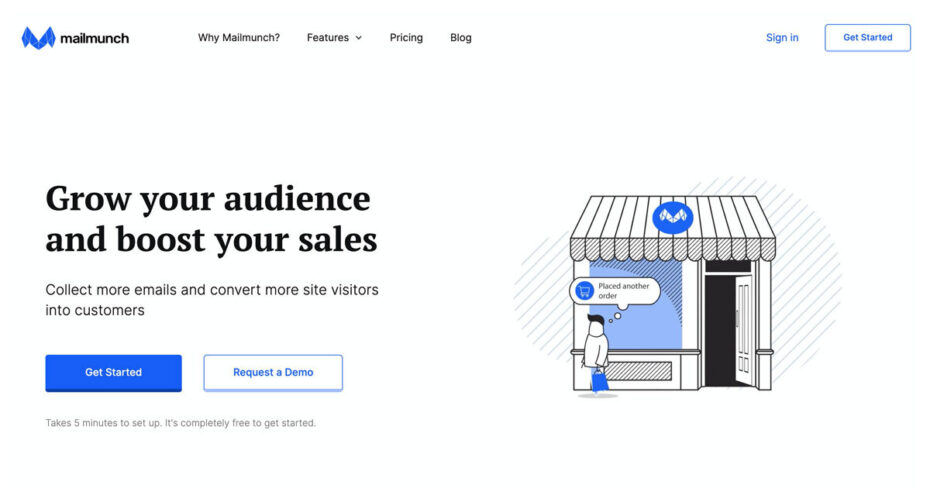 Mailmunch
|
Defining the Purpose of Your Email Newsletter
Before crafting your email newsletter, it’s crucial to define its purpose. What do you want to achieve? I suggest considering whether your goal is to promote products, share industry news, or build relationships. Establishing a clear objective will make your content more meaningful and aligned with your overall marketing strategy.
A focused purpose also helps create consistent messaging. I believe consistency is key when building trust with your audience. Once you know your newsletter’s purpose, every edition should deliver value that aligns with your mission. This strengthens your brand and keeps subscribers engaged over time.
When defining your newsletter’s purpose, I recommend analyzing your broader business goals. Align your email content with what you aim to achieve in the long run. This ensures your email newsletter works in harmony with your larger marketing efforts. Clarity in purpose leads to more focused, targeted, and effective communication.
Additionally, I advise you to regularly review and adapt your newsletter’s purpose. Your audience’s needs may evolve, and staying flexible will help your content remain relevant. Ensure that every email you send out speaks directly to your audience’s changing needs, maximizing engagement.
Finally, define key performance indicators (KPIs) for your email newsletters. Tracking open rates, click-through rates, and conversions will help you measure the success of your content. This data will allow you to fine-tune your messaging and make informed improvements over time.
Identifying Your Target Audience for Better Engagement
Understanding your target audience is vital for an email newsletter that engages. I recommend segmenting your email list based on demographics, interests, and behaviors. Tailored content speaks directly to the needs of specific groups, making it more likely that they will read and act on your emails.
You can further enhance your engagement by personalizing the subject lines and content. I believe adding personal touches, like the recipient’s name or tailored offers, increases open rates. Personalization makes readers feel valued, fostering a closer connection with your brand.
Conducting surveys or analyzing past user interactions can provide deeper insights into what your audience prefers. I advise leveraging this data to continuously improve your newsletter’s content. By understanding their likes and dislikes, you can craft messages that resonate and drive higher engagement.
Moreover, I suggest testing different approaches to identify what your audience responds to best. This could include adjusting content tone, visuals, or the time emails are sent. Testing ensures you stay aligned with your audience’s evolving preferences, keeping your email newsletters fresh and relevant.
Building a clear customer persona can also help you pinpoint your audience. I recommend outlining their preferences, challenges, and aspirations. This makes it easier to create content that solves their problems and enhances their experience with your brand.
Choosing the Right Email Marketing Platform
Selecting the right email marketing platform is essential for delivering professional and efficient newsletters. I advise you to choose platforms like Aweber, Omnisend, or Mailmunch. These tools offer automation features that save time and allow for better targeting, resulting in higher engagement rates.
Platforms with built-in analytics are invaluable. I recommend using a platform that allows you to track key metrics like open rates and clicks. This helps you monitor the success of each campaign and make data-driven decisions to improve future newsletters.
Another factor to consider is integration with other marketing tools. I advise ensuring that your platform seamlessly connects with your CRM, website, and social media channels. This enhances your ability to track user behavior and optimize your newsletter content for greater impact.
Look for customizable templates. I suggest choosing a platform that offers a wide variety of designs, so you can create newsletters that reflect your brand’s identity. Consistency in branding builds trust with your audience and improves overall readability.
Finally, I recommend checking for scalability. Your chosen platform should be able to grow with your business, handling increasing subscriber lists without performance issues. This will prevent future headaches and ensure your email campaigns continue to run smoothly as your brand expands.
Creating an Engaging Template Design
A well-designed template is the backbone of any successful email newsletter. I advise you to keep the design clean and simple. A clutter-free layout improves readability and ensures that subscribers can easily navigate through your content without feeling overwhelmed.
Ensure your email template is mobile-friendly. I strongly believe that optimizing for mobile devices is a non-negotiable aspect, as more than half of emails are opened on smartphones. A responsive design enhances user experience and boosts engagement by making your content easily accessible on all devices.
I suggest using consistent branding elements, like your logo, color scheme, and fonts. These visual cues reinforce brand recognition. When subscribers see familiar designs, they’re more likely to trust the content and take action. I recommend creating a template that’s instantly recognizable.
Incorporating plenty of white space is another tip I suggest. White space helps break up the content and makes the email visually appealing. This also directs the reader’s eye to the most important elements, like your call-to-action, boosting the chances of conversion.
Lastly, I recommend testing your template before sending it out. Send test emails to different devices to ensure it looks great everywhere. This prevents formatting issues and ensures a smooth reader experience, ultimately leading to higher engagement.
Crafting Compelling Content for Your Email Newsletter
Compelling content is the heart of your email newsletter. I recommend focusing on creating engaging subject lines, persuasive body content, and strong calls-to-action. These elements encourage readers to open your emails, engage with the content, and take action, such as visiting your website or making a purchase.
Additionally, I believe consistency in tone and style will keep your audience engaged. Whether you’re educating, entertaining, or selling, your newsletter should offer value in every edition. Keep your messaging clear and concise, making it easier for readers to digest and act on the information.
Writing Attention-Grabbing Subject Lines
Your subject line is the first thing readers see, so I recommend making it attention-grabbing and relevant. A compelling subject line piques curiosity and entices recipients to open the email. Use power words and include personalization when possible to boost open rates.
Testing different subject lines is essential for finding what resonates with your audience. I advise running A/B tests to determine which wording and style result in higher open rates. Small tweaks can make a big difference in engagement, helping you refine your email strategy over time.
Be mindful of length. I suggest keeping subject lines short and to the point. A subject line between 40-50 characters is ideal, as it ensures that the message displays fully on mobile devices. This increases the likelihood of your email being opened and read.
Incorporating urgency can also be effective. I believe adding a time-sensitive element, like “limited-time offer,” encourages quicker action. However, ensure the urgency is genuine to maintain trust with your audience.
Lastly, avoid spammy language. I recommend staying away from overly promotional terms like “free” or “buy now” in your subject lines, as these may trigger spam filters. Focus on creating value-driven and informative subject lines that encourage natural curiosity.
Structuring the Body of Your Email Newsletter
A well-structured email keeps readers engaged. I recommend breaking your content into small, digestible sections with clear headings. This makes it easier for readers to skim and find the information they’re most interested in. Clear structure enhances readability and improves engagement rates.
Use short paragraphs and bullet points to present key information. I believe this format allows readers to absorb content quickly, especially on mobile devices. Keep your message concise, focusing on delivering value with every line.
I suggest adding a personal touch to your content. Use conversational language to build rapport with your audience. This helps humanize your brand and makes your emails feel more approachable, improving subscriber loyalty over time.
Incorporating links throughout the body can also drive traffic to your website or landing pages. I advise you to place hyperlinks in relevant sections of your content, encouraging readers to explore further and take action on offers or products.
Lastly, I recommend always including a clear call-to-action at the end of each section. This guides the reader on what to do next, whether it’s visiting your blog, purchasing a product, or signing up for an event. A strong CTA drives conversions and ensures the email delivers results.
Creating Clear and Persuasive Call-to-Actions
A clear call-to-action (CTA) is essential for driving reader engagement. I recommend using direct, action-oriented language that tells your readers exactly what to do next. Whether you want them to visit your site, make a purchase, or sign up for something, a well-placed CTA increases conversions.
Ensure your CTA stands out visually. I suggest using buttons or bold fonts to draw attention to your action prompt. Readers should be able to easily identify and click on your CTA without scrolling too much. The design should naturally guide them toward the action you want them to take.
I believe every CTA should create a sense of urgency. Phrases like “Get started today” or “Limited time offer” can motivate readers to act quickly. However, always ensure the urgency is genuine to maintain trust with your audience. Faking urgency can lead to decreased engagement over time.
You can also personalize your CTAs to increase effectiveness. I recommend using dynamic content that addresses the reader directly, such as “Claim your discount now, [Name].” Personalization makes the CTA feel more relevant and increases the likelihood of a positive response.
Lastly, test different CTAs to find what works best. I suggest running A/B tests with variations in wording, placement, and design. This allows you to continuously improve your email newsletter performance by focusing on what resonates with your audience the most.
Incorporating Relevant Visuals to Enhance Content
Visuals are a powerful way to enhance the appeal of your email newsletter. I advise you to use relevant images, videos, or infographics that support the text. Visual content grabs attention and helps break up large blocks of text, making your newsletter more engaging and enjoyable to read.
Be mindful of image size and loading times. I suggest optimizing your visuals so they load quickly across all devices, especially mobile. Slow-loading images can frustrate users and lead to higher bounce rates, so ensuring they’re lightweight yet high-quality is crucial.
Use visuals strategically to guide the reader’s eye. I recommend placing images next to important content or CTAs to naturally draw attention. A well-placed visual can make a significant impact by emphasizing key messages or offers, encouraging readers to take action.
Incorporating brand-related visuals is another strategy to consider. I believe using your brand’s logo, colors, and design elements consistently across newsletters helps reinforce your identity. This builds trust and familiarity with your readers, encouraging them to engage with your content regularly.
Lastly, always use alt text for your images. I suggest adding descriptive alt text that explains what the image is, ensuring accessibility for all readers. This also helps with SEO by giving search engines additional content to crawl, which can improve your rankings.
Key Elements to Include in Every Email Newsletter
For an email newsletter to be effective, it must include essential elements that engage and provide value to readers. I recommend focusing on personalization, valuable resources, mobile optimization, and social media integration. These elements make your email more dynamic and relevant to your audience, increasing the likelihood of reader engagement and loyalty.
Each element should be strategically placed to capture attention without overwhelming the reader. By ensuring your newsletter is visually appealing and easy to navigate, you create an enjoyable experience that encourages subscribers to open future emails and take action on your content.
Personalizing Your Email Content to Increase Reader Loyalty
Personalizing your email newsletter content is a powerful way to build loyalty among your subscribers. I advise including personal touches like using the recipient’s name in the subject line or body. This makes the email feel more tailored and relevant to the reader, which can significantly boost open and click-through rates.
Segmenting your email list is another effective personalization strategy. I suggest dividing your audience based on factors such as purchasing behavior or interests. This allows you to send content that speaks directly to each group’s needs, increasing engagement and overall satisfaction with your emails.
Additionally, I recommend using dynamic content that changes based on individual subscriber data. For example, offering personalized product recommendations based on past behavior shows that you understand your audience’s preferences. This level of personalization can create stronger connections with your brand.
Personalizing timing can also improve engagement. I believe sending emails at the right time for each segment can increase the chances of them being opened. Using tools that analyze user behavior and send emails when subscribers are most active can be highly effective.
Lastly, I suggest consistently analyzing the performance of personalized content. Use metrics such as open rates and conversions to determine what resonates with your audience and refine your strategies accordingly. Continuous optimization of personalized elements keeps your email newsletter fresh and relevant.
Adding Valuable Resources and Offers
Providing valuable resources in your email newsletter is essential for keeping your audience engaged. I recommend offering exclusive content such as how-to guides, tutorials, or downloadable resources that directly address your subscribers’ needs. This not only positions your brand as a helpful resource but also encourages readers to look forward to each email.
Including limited-time offers or promotions is another great way to add value. I advise providing special discounts or early access to new products or services, available only to your email subscribers. This creates a sense of exclusivity, motivating readers to take action quickly and reinforcing loyalty.
When offering resources, I believe it’s important to ensure they are directly aligned with your audience’s interests. For example, if your subscribers are interested in digital marketing, providing tips or case studies on improving their campaigns would be highly valuable and keep them engaged with your content.
Consider linking to external resources, such as articles or tools that complement your content. I recommend curating high-quality, third-party content to expand on your subject matter. This provides additional value and strengthens your position as an industry expert, increasing trust with your audience.
Lastly, I suggest using clear CTAs that encourage readers to take advantage of the resources or offers you’re providing. Whether it’s downloading an ebook or redeeming a discount, guide them clearly toward the action you want them to take for better conversions.
Optimizing Content for Mobile-Friendly Viewing
With the majority of emails being opened on mobile devices, I strongly recommend optimizing your email newsletter for mobile. A responsive design ensures that your content looks great on screens of all sizes, providing a seamless experience for your readers and improving overall engagement rates.
One of the key mobile optimization strategies I advise is using a single-column layout. This makes your newsletter easier to read on small screens and prevents users from having to zoom or scroll horizontally, enhancing the user experience. Clear fonts and concise text further improve readability.
Images are also an important factor in mobile optimization. I suggest ensuring that any images you include are optimized for fast loading times. Large images can slow down the email’s load time, leading to a frustrating experience for mobile users. Always use compressed, high-quality images for better performance.
Another tip is to keep your CTAs mobile-friendly. I recommend using larger buttons that are easy to tap on small screens. This increases the chances of your readers interacting with your content, whether that’s clicking a link, making a purchase, or signing up for an event.
Lastly, test your email newsletter across different devices and email clients. I believe thorough testing ensures that your email appears correctly on all platforms, avoiding potential display issues that could harm engagement and readability.
Including Social Media Links to Boost Engagement
Including social media links in your email newsletter is a simple yet effective way to increase engagement and expand your reach. I advise adding prominent social media icons at the end or within the body of your email. This encourages subscribers to follow and engage with your brand across multiple platforms.
Social media integration also allows you to cross-promote content. I suggest sharing blog posts, videos, or special announcements in both your email newsletter and social media channels. This not only amplifies your message but also ensures that subscribers who prefer different platforms can stay updated with your brand.
I believe including social sharing buttons can further boost engagement. These buttons allow readers to share your email content directly to their own social networks, extending your newsletter’s reach and attracting new subscribers through organic referrals.
Additionally, offering incentives for following your social media channels can be an effective strategy. I recommend giving subscribers exclusive access to content or discounts in exchange for following your brand on platforms like Instagram, Facebook, or Twitter. This creates additional value for your audience while boosting your social media presence.
Lastly, I advise analyzing which social media platforms your audience is most active on. Focus on promoting those channels in your email to maximize engagement and interaction, ensuring that your efforts are targeted where they will have the greatest impact.
Ensuring Compliance with GDPR and Privacy Policies
Ensuring that your email newsletter complies with GDPR and privacy policies is crucial for maintaining trust with your subscribers and avoiding legal penalties. I recommend clearly stating how subscriber data will be used and obtaining explicit consent before sending marketing emails.
I advise including an easy-to-find unsubscribe option in every newsletter. This not only ensures compliance but also builds trust by showing subscribers that they are in control of their preferences. Making the process simple and transparent is essential for a positive user experience.
Segmenting your email list to only include subscribers who have opted in is another important step. I believe keeping a clean, permission-based email list helps avoid deliverability issues and ensures your emails are sent only to engaged subscribers who have given their consent.
Additionally, I suggest regularly reviewing your data handling practices. Ensure that your subscribers’ personal information is stored securely and only used for the purposes outlined in your privacy policy. Regular audits will help maintain compliance and protect both your brand and your audience.
Finally, I recommend staying informed about changes to privacy regulations. As laws evolve, keeping your email practices up-to-date will help you remain compliant and trustworthy, safeguarding your relationship with your subscribers and protecting your brand from potential legal issues.
Optimizing and Testing Your Email Newsletter for Success
Optimizing your email newsletter is essential for maintaining high engagement and driving results. I recommend testing various elements, such as subject lines and content, to understand what resonates with your audience. By refining your approach, you can continually improve open rates, click-through rates, and overall reader satisfaction.
Testing should be followed by thorough analysis. I suggest closely monitoring key metrics like open rates and conversions to assess the impact of your changes. Consistently optimizing your email newsletter ensures that your campaigns are effective, helping you meet your marketing objectives.
A/B Testing Subject Lines and Content
A/B testing allows you to compare two versions of your email newsletter to determine which performs better. I recommend testing subject lines to see what grabs attention most effectively. Try different lengths, tones, or word choices to understand what compels your readers to open the email.
You can also test different content layouts. I advise comparing various types of content, such as images versus text-heavy emails, to see what your audience prefers. Testing variations in content helps you refine your messaging and deliver what your readers value most.
I suggest keeping the testing process simple by changing only one variable at a time. This makes it easier to pinpoint the exact factor contributing to the success or failure of an email. Whether it’s the subject line, body content, or call-to-action, A/B testing helps you focus your strategy.
Additionally, I believe testing different tones and approaches can give insight into what resonates best with your audience. For example, trying a conversational versus a formal tone can help you determine the best way to connect with your readers, resulting in better engagement.
Lastly, I recommend tracking the results over time. Collecting enough data ensures that your conclusions are accurate and actionable, enabling you to make informed decisions about future email campaigns based on what your audience prefers.
Analyzing Open and Click-Through Rates for Improvement
Monitoring your email open and click-through rates is crucial to improving performance. I advise you to regularly analyze these metrics to understand how well your email newsletter engages subscribers. Low open rates may indicate that your subject lines need refinement or that your sending schedule needs adjustment.
Click-through rates, on the other hand, provide insights into the effectiveness of your content and CTAs. If your click-through rate is low, I recommend revisiting your content to ensure it’s providing enough value and prompting action. A strong call-to-action is key to driving clicks.
Segmentation can also impact these metrics. I suggest dividing your audience into different segments based on interests or behavior to better tailor content. Sending targeted messages often leads to higher engagement, as recipients feel the content is more relevant to them.
Testing the timing of your emails can offer valuable insights as well. I believe experimenting with different sending times can help you find when your audience is most active. Optimizing send times improves the likelihood of your email being opened and read, boosting overall engagement.
Finally, I recommend continually refining your email strategy based on these metrics. Regular analysis and adaptation allow you to stay aligned with your audience’s preferences, resulting in a more successful email marketing campaign over time.
Segmenting Your Email List for Targeted Campaigns
Segmenting your email list is one of the most effective ways to enhance your email newsletter’s performance. I recommend dividing your subscribers into specific groups based on demographics, purchasing behaviors, or engagement levels. This allows you to send targeted content that speaks directly to their needs and interests.
Personalization plays a key role in segmentation. I suggest tailoring subject lines and content to match each segment’s preferences. For example, sending product recommendations based on past purchases can significantly boost engagement and conversions by making the email feel more relevant.
Segmentation also helps you prioritize high-value customers. I advise identifying your most engaged subscribers and creating specialized content for them. This not only strengthens your relationship with them but also increases the chances of them converting into loyal customers.
You can further refine segmentation based on engagement behavior. I recommend focusing on subscribers who haven’t interacted with your emails in a while by sending re-engagement campaigns. These targeted efforts help win back inactive users and improve your list’s overall health.
Lastly, segmenting allows you to conduct more targeted testing. I suggest using A/B tests within segments to fine-tune your messaging for different audiences. This ensures that your email newsletters resonate with the unique needs of each group, maximizing the effectiveness of your campaigns.
Scheduling Your Email Newsletter for Maximum Reach
Scheduling your email newsletter at the right time can greatly impact engagement. I suggest analyzing your audience’s behavior to determine the optimal time to send your emails. For most industries, sending emails during mid-morning or early afternoon works well, but testing will reveal what’s best for your audience.
Consistency is key when scheduling emails. I recommend setting a regular sending schedule, whether it’s weekly, bi-weekly, or monthly. Consistent timing builds anticipation among your subscribers, increasing the likelihood of them opening your newsletter each time it arrives.
Consider time zones as well. I advise segmenting your audience based on location so that your email reaches subscribers at the right moment in their day. Sending emails too early or too late can result in lower open rates, as they may get buried in inboxes or overlooked.
Scheduling tools can help automate this process. I suggest using platforms like Aweber or Omnisend to automate your campaigns and ensure that your newsletters are sent at the optimal time. This frees up time while maintaining consistency and improving overall performance.
Lastly, I believe sending frequency should be adjusted based on engagement metrics. If your subscribers are consistently opening and clicking your emails, you can experiment with increasing the frequency. Conversely, if engagement drops, reducing the frequency may help maintain subscriber interest.
Common Mistakes to Avoid When Creating an Email Newsletter
Even with a solid plan, certain mistakes can hinder the success of your email newsletter. I recommend avoiding these common pitfalls, such as overloading your content or using poorly designed templates. Being aware of these errors can save you from frustrating your audience and improve your newsletter’s effectiveness.
Additionally, I believe maintaining consistent branding and offering clear value in your content are critical. Failing to do so can lead to reader confusion or disengagement. Ensuring that each email is easy to read and offers something of genuine value will help keep subscribers interested and engaged.
Avoiding Overloading Content with Too Much Information
Overloading your email newsletter with excessive content can overwhelm readers. I recommend keeping your content concise and focused. Each section should provide valuable information without being overwhelming. Short, digestible paragraphs and clear headings help keep your email easy to read and engaging.
To prevent overwhelming your readers, I advise focusing on one key message per email. Trying to cover too many topics can dilute your content and cause your audience to lose interest. Focusing on a single topic allows you to provide more in-depth value and keeps your message clear.
I suggest using bullet points or short summaries for complex information. This helps break up the text and makes it easier for readers to absorb the key points quickly. When information is presented clearly and concisely, it’s more likely to resonate with your audience.
Another tip I recommend is linking to additional resources rather than cramming everything into one email. If you have more to say, direct readers to your blog or website for further information. This keeps the email short while providing value to those who want more details.
Lastly, I advise avoiding long, wordy introductions. Get to the point quickly and make sure each section serves a purpose. Readers are more likely to stay engaged when the content is concise, informative, and easy to follow.
Avoiding Poorly Designed Templates that Confuse Readers
Poorly designed templates can confuse readers and negatively impact your email’s effectiveness. I recommend using a clean, simple design that’s easy to navigate. A well-organized layout helps guide readers through your content and makes your email more engaging and visually appealing.
Cluttered or overly complex templates can overwhelm readers. I suggest sticking to a minimalistic design with plenty of white space. This improves readability and makes your content easier to digest, keeping your audience engaged throughout the email.
I advise ensuring that your template is mobile-responsive. With so many people reading emails on their phones, it’s essential that your email looks great on both desktop and mobile devices. A responsive design ensures that your newsletter is accessible and user-friendly for all subscribers.
Consistent branding is key. I believe using your brand’s colors, fonts, and logos in the template reinforces your brand identity and builds trust with your audience. A consistent visual identity makes your emails instantly recognizable, encouraging readers to engage with your content.
Lastly, I recommend testing your email template before sending it out. Send test emails to different devices and platforms to ensure the layout looks good everywhere. This prevents display issues that could harm readability and reduce engagement.
Ensuring Consistent Branding Across Emails
Consistency in branding is crucial for building trust with your subscribers. I suggest using the same colors, fonts, and logos across all of your email newsletters. This reinforces your brand identity and makes your emails instantly recognizable to your audience, helping to establish familiarity.
Inconsistent branding can confuse readers. I advise sticking to your brand’s visual style and tone of voice in every email. Whether you’re writing a promotional email or an educational newsletter, keeping your messaging and design aligned with your brand strengthens your relationship with your audience.
I recommend ensuring that your email newsletters match the look and feel of your website and other marketing materials. A cohesive brand experience across all platforms builds credibility and makes your business appear more professional and trustworthy.
Maintaining a consistent tone of voice is equally important. I believe the language you use in your email should reflect your brand’s personality. Whether your brand is fun and casual or professional and formal, consistency in tone helps create a more engaging and authentic connection with your readers.
Lastly, I advise updating your branding periodically while staying true to your core identity. Refreshing your visuals can keep your newsletters modern and exciting, but make sure any changes still align with your established brand guidelines to maintain recognition.
Avoiding Generic Content Without Clear Value to Readers
Generic content can quickly lose your readers’ interest. I recommend crafting your email newsletters with specific, valuable content tailored to your audience’s needs. Each email should provide something of genuine value, whether it’s useful tips, industry insights, or exclusive offers.
Understanding your audience is key. I suggest segmenting your email list and tailoring content to each group. Sending generic, one-size-fits-all messages can result in lower engagement, as the content may not resonate with all readers. Personalized, targeted content is more likely to capture attention.
I believe offering actionable takeaways makes your emails more valuable. Provide clear advice or solutions to problems your audience faces. When readers feel they are learning something useful from your content, they are more likely to stay engaged and look forward to future emails.
Regularly refreshing your content helps avoid redundancy. I recommend staying on top of industry trends and sharing fresh insights in your newsletters. Providing timely, relevant information ensures that your emails remain valuable and keeps your audience engaged over time.
Lastly, I advise including a strong call-to-action in every email. Make it clear what you want your readers to do next, whether it’s visiting your website, making a purchase, or reading a blog post. A compelling CTA adds value by guiding your audience toward meaningful actions.


